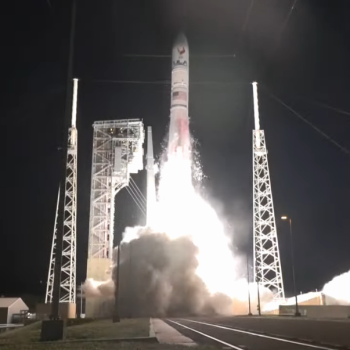SpaceX: Ready to launch Starship/Superheavy by end of January but it won’t
Surprise! During the NASA press update yesterday making official the new delays in its entire Artemis lunar program, a SpaceX official revealed that the company will be ready to launch the third orbital test flight of its Starship/Superheavy rocket by end of January, but it also does not expect to get a launch approval from the FAA for at least another month.
Speaking during the press conference, SpaceX Vice President of Customer Operations & Integration Jensen said Starship hopes to be ready to test Starship once more by the end of January and to receive the necessary license from federal authorities to do so by the end of February.
During the conference Jensen made it repeatedly clear that it will require numerous further launch tests to get ready ready for its lunar landing mission for NASA — about ten — and that the company hopes to have this task completed by 2025 so that the agency’s new delayed schedule can go forward as now planned.
Yet how will SpaceX do this if the FAA is going to delay each launch because of red-tape by at least one month? SpaceX might be confident the FAA will give the okay for a launch in late February, but no one should be sanguine about this belief. Bureaucrats when required to dot every “i” and cross every “t”, as it appears the Biden administration is demanding, can be infuriatingly slow in doing so, even if they wish to hurry.
This news confirms my prediction from November that the launch will happen in the February to April time frame. It also leaves me entirely confident that my refined December prediction of a launch no earlier than March will be right.
SpaceX wants to do about six test launches per year. I don’t know how it can do so with the FAA holding it back.
Surprise! During the NASA press update yesterday making official the new delays in its entire Artemis lunar program, a SpaceX official revealed that the company will be ready to launch the third orbital test flight of its Starship/Superheavy rocket by end of January, but it also does not expect to get a launch approval from the FAA for at least another month.
Speaking during the press conference, SpaceX Vice President of Customer Operations & Integration Jensen said Starship hopes to be ready to test Starship once more by the end of January and to receive the necessary license from federal authorities to do so by the end of February.
During the conference Jensen made it repeatedly clear that it will require numerous further launch tests to get ready ready for its lunar landing mission for NASA — about ten — and that the company hopes to have this task completed by 2025 so that the agency’s new delayed schedule can go forward as now planned.
Yet how will SpaceX do this if the FAA is going to delay each launch because of red-tape by at least one month? SpaceX might be confident the FAA will give the okay for a launch in late February, but no one should be sanguine about this belief. Bureaucrats when required to dot every “i” and cross every “t”, as it appears the Biden administration is demanding, can be infuriatingly slow in doing so, even if they wish to hurry.
This news confirms my prediction from November that the launch will happen in the February to April time frame. It also leaves me entirely confident that my refined December prediction of a launch no earlier than March will be right.
SpaceX wants to do about six test launches per year. I don’t know how it can do so with the FAA holding it back.









